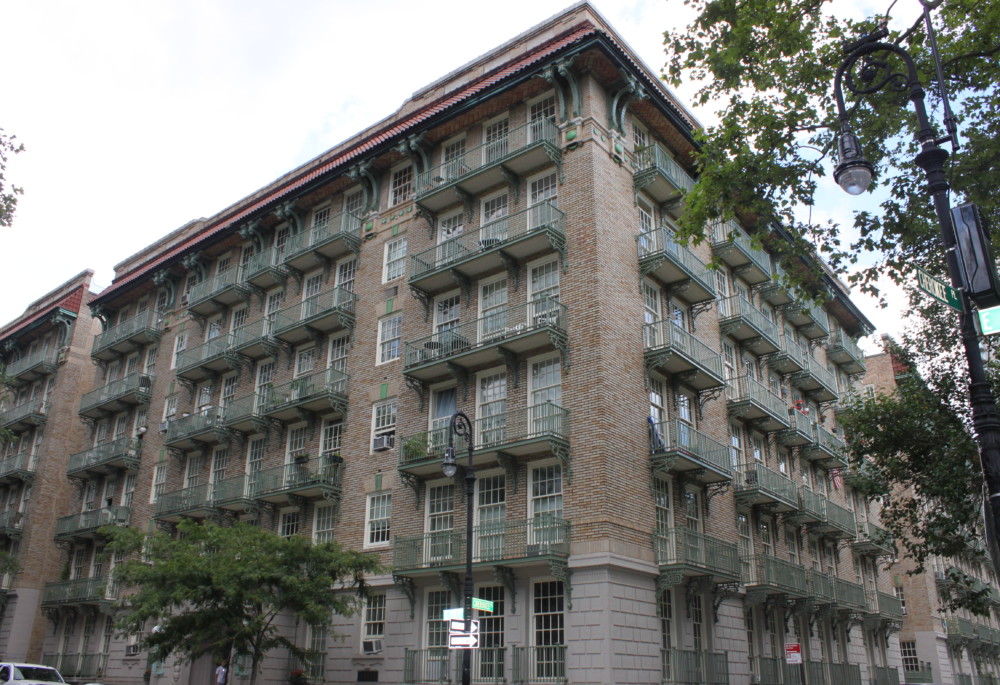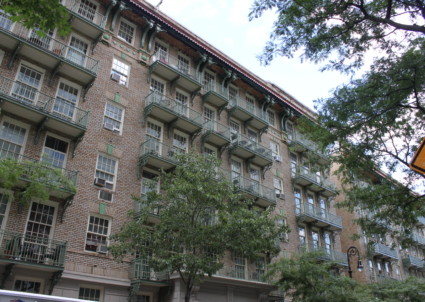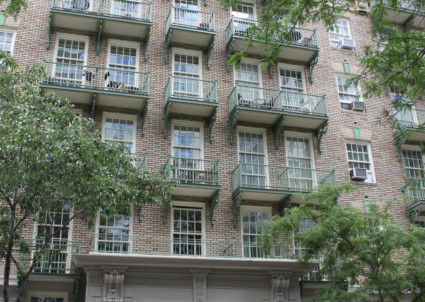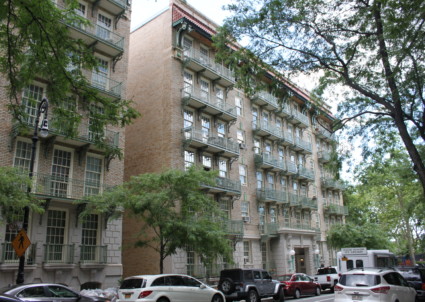Cherokee Place
507-523 East 77th Street and 508-522 East 78th Street
Henry Atterbury Smith, 1909-11
NYC Individual Landmark, National Register of Historic Places
Across 78th Street from the City and Suburban York Avenue Estate is another, slightly earlier, example of philanthropic housing. The Shively Sanitary Tenements (also known as the East River Homes, and now the Cherokee Apartments), were four buildings built to provide curative housing for tuberculosis patients. At the turn of the 20th century, tuberculosis, or “consumption,” was the second-leading cause of death among New Yorkers (pneumonia was first). The Shively tenements, sponsored in large part by Mrs. Anna Harriman Vanderbilt and named in honor of physician and home-care proponent Dr. Henry Shively, were an attempt to put into practice current theories of the day regarding appropriate treatments for tuberculosis. The disease was thought to spread contagiously in the dark, cramped and airless conditions of old-generation tenement buildings in the city’s poorer districts. In 1910, an article in the journal American Architect said of the traditional tenement house, “No part is more subject to horrors, physical and moral, than halls and stairs.” For the Shively Sanitary Tenements, architect Henry Atterbury Smith designed an orderly grid of donut-shaped buildings with generous interior courtyards, plenty of balconies and exterior stairwells and corridors leading directly to each apartment. Gone today are the many rooftop pavilions that once provided residents with ample outdoor space and fresh air, which was regarded as the best cure for tuberculosis. These technologically innovative buildings employed fireproof construction techniques, such as the structural Guastavino-tile arches visible in the exterior stairwells, and are also notable for their handsome Beaux-Arts-style façades.



